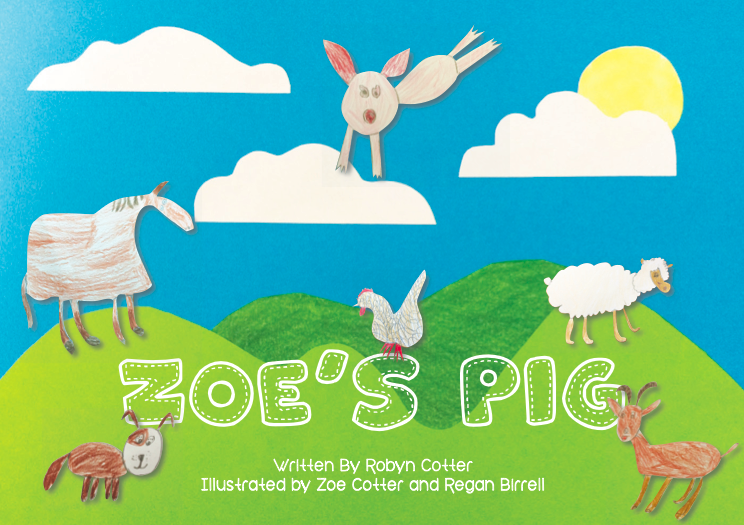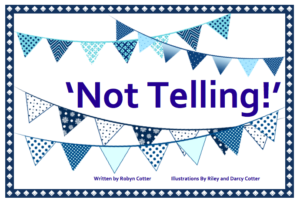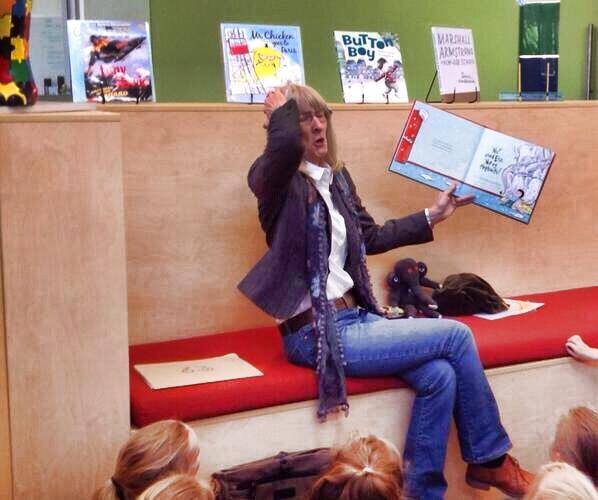Teaching with a Feather Stories
Working with Zoe Cotter, a Year 4 student, we have published a small story. The story is based on one of Zoe’s experience when living in Woolamin, a little town near Tamworth. Included are follow up ideas for your students.
Zoe is travelling into Tamworth with her Dad. On the way she spots lots of animals. What happens when Zoe sees a pig?
Suggested Follow Up Ideas:
1. Make a class book. Each student contributes a page. On the way to school I saw…
2. Each student writes a story using Zoe’s Pig as the model.
3. Choose another animal. What would you do with this animal if it came to school?
e.gs
In maths my goat could …
In PE my goat could …
During lunch time my goat could …
Add a twist to the story – A Could/Would Story!
eg. In maths my goat could sit on the floor but he would probably chew my maths book!
In PE my goat could run around the oval but he would probably eat the grass!
In art my goat could wait by the door but he would probably knock over the paint!
4. Illustrate your chosen animal showing one of the ideas you have suggested. Use Regan and Zoe’s idea and make a background from coloured paper. Cut out your animal and paste onto the background. Add your picture to a class display or make a class book with everyone contributing a page.
Follow this link to download a PDF copy of Zoe’s Pig
Note: ‘It may take a few moments to download (depending on your internet speed.) (8.7 MB)

Here’s a story to read to your students. 
Mr Cotts asks Mrs Cotts to come out on a day trip but won’t say where he is going.
‘Where are we going’, asks Mrs Cotts.
‘Not telling, says Mr Cotts.
‘Not Telling!’ is a story about a surprise day trip.
Where do they go and what does Mrs Cotts discover?
Follow this link to download the story in PDF format. It will take a few minutes to download.
Follow this link for followup activities in Personal Development, Music, Writing, Speaking and Listening, Inquiry and Art.
‘Not Telling!’ provides opportunities for discussion re what’s important to tell others, when you need to tell others and when it’s ok to keep a secret.
The Impact of Music in the Classroom
While working with a class of Year 3 students I was playing Canon in D Major by Pachelbel. One of the boys asked me, ‘What is that beautiful music you are playing?’ I told him the name then wrote the title on a piece of paper for him.
Two weeks later I returned to the classroom to catch up with the teacher and students. As I roamed the room to speak with all the students the same boy came up to see me.
‘Mrs Cotter, you know that music you told me about, well I am learning to play it on the piano’.
What a wonderful ‘unexpected’ outcome – try playing music in the background as your students are working. Many students nominate music as one of their Learning Likes and Preferences when setting up Optimal Work Environments.
Optimal Learning Spots – An Unexpected Outcome
Working with a Year 1 teacher introducing Optimal Learning Spots something unexpected happened – a large majority of students went and got a chair and brought it to the floor seating area. We were expecting students to choose a spot on the floor.
A lot of noise began as chairs were clashing together, complaining from students who had chosen to sit on the floor and couldn’t see around the chairs – it was a scene of mini pandemonium and took several minutes before the students settled.
What to do?
I explained that it took far too long to get organised, too much noise and lack of consideration for those students who had selected an OLS on the floor. Chairs were put right in front and blocked views, too much chair banging and unsafe movement of chairs. Next time their teacher and I expected to see the whole process of selecting OLS to be done quickly, quietly and efficiently!
What Happened!
The next time I worked in the class and held up the OLS sign the students moved like clockwork. Those wanting to sit on a chair had it organised in a flash. No blocking others view, no banging and clanging and no noise.
Every student demonstrated organisation, decision-making and problem solving skills.
The classroom teacher had continued to use the OLS strategy and the students had learnt how to be organised quickly and easily.
Using the Optimal Learning Spots strategy takes one small part of your day and will contributes to your culture of students thinking for themselves and making worthwhile and authentic decisions to be the best learners they can be!
The Power Of One:
Find out how a highly disruptive Year 2 student influenced the Power of One strategy.
https://teachingfeather.com/the-power-of-one/

Robyn getting into the passion of story telling on National Reading Day.
